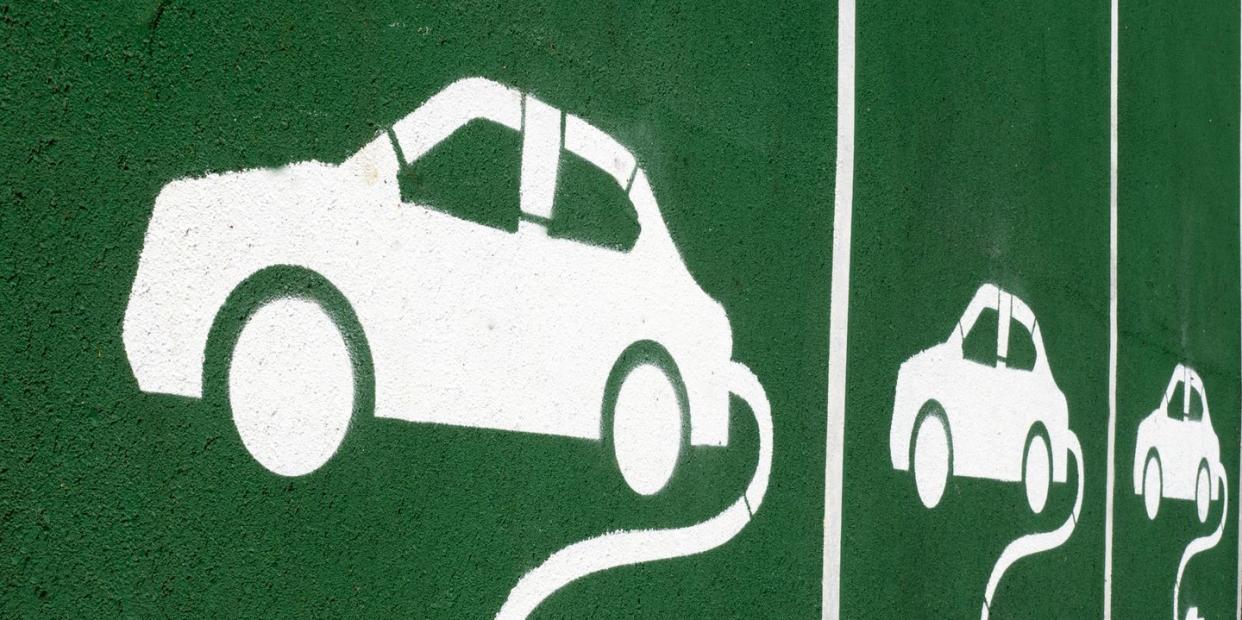Peer-to-Peer Electric Car Charging Is Wild—and Possibly Revolutionary

Researchers hope a new peer-to-peer car charging concept could help sell more electric cars.
Electric cars are comparable to regular cars and much cleaner, but consumers are still hesitant.
The mobile charger works like midair jet refueling, using control algorithms that let cars get very close.
Could the Napster of electric cars eliminate the need for charging stations altogether? A wild new concept uses the strengths of autonomous electric car designs to pair them for sharing a charge on the go.
In IEEE Spectrum, senior editor Philip Ross writes that the idea is like an existing refueling model. “Jet fighters can’t carry a huge tank of fuel because it would slow them down,” Ross explains. “Instead they have recourse to air-to-air refueling, using massive tanker planes as their gas stations.”
Engineers from the University of Florida have designed the system, which they’ve named Peer to Peer Car Charging (P2C2). They’ve put their preprint (not yet peer reviewed) paper online at ARXIV.
“Many remote regions do not have charging stations, and even if they are present, it can take several hours to recharge the battery,” the team writes. “Conversely, [internal combustion engine] vehicle fueling stations are much more prevalent, and re-fueling takes a couple of minutes. These facts have deterred many from moving to EVs.”
So how does this car-to-car charge work? A car with excess energy sets an indicator that it’s receptive to sharing power. Then, a car looking for some juice lines up right behind, using the kind of safe close-driving algorithms that autonomous car technology has enabled. The two cars link up, and charge flows from the higher to the lower electric “tank.”


The scientists have documented both their cloud-based charge monitoring system and their idea for some number of rolling supercharge stations that can fuel many consumer vehicles.
Using the Simulation of Urban Mobility (SUMO) open source traffic simulator, the researchers set up matching scenarios with and without their mobile charging system in place. “We observe promising results with up to 65 [percent] reduction in the number of EV halts with up to 24.4 [percent] reduction in required battery capacity without any extra halts,” they conclude.
That’s a huge change, and again, it could work anywhere there are two or more electric vehicles—or just one electric vehicle and one of the team’s supercharge trucks.
The lack of charging infrastructure and “range anxiety” are two of the most cited reasons why U.S. consumers are scared to invest in electric vehicles, a 2019 survey found. But in the same survey, consumers had realistic expectations of how far a mid-priced electric vehicle could go on one charge. “It’s clear the biggest boon to EV adoption will be general education if consumers’ expectations already match the reality of mass-market EVs,” CNET suggested.
Closing the gap between expectations and choosing to purchase, then, may be a matter of some amount of psychology. Most electric vehicle drivers aren’t using a full charge at a time, but feeling like they could go a long way seems to be important to consumers. Psychologically, the perceived scarcity of charging stations combines with the perceived “low” mileage range to produce a situation with too many unknowns.
This is why the idea of peer-to-peer charging is so compelling. The more electric vehicles are on the road, the more mobile charging spots any individual driver will see. Like the gas stations positioned every 20 miles along America’s interstates, the presence of these charging options will still comfort people who have plenty of juice to keep driving. And the perception of a growing and dense infrastructure of charging stations could help turn the public perception of electric vehicles.
You Might Also Like

